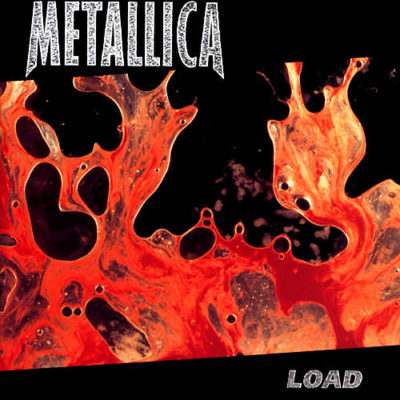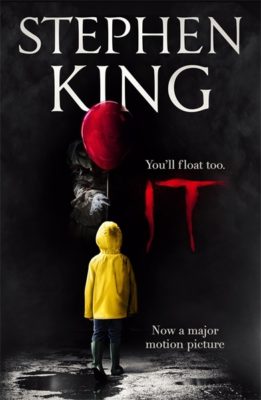In 1996, Metallica cut off something very important, a cosmetic feature that shouldn’t affect their music yet clearly did. Even now, they’re still recovering from this disastrous shearing.
I refer to the pointy ends of their logo. The self-titled album had them. This one doesn’t. As every heavy metal fan knows, this minor change is actually a musical circumcision of the worst sort, clipping the band of its masculine power.
Anthrax did it in 1995, and the made their worst album in 10 years. Iron Maiden did it in 1998, and made their worst album ever. Ten years later Judas Priest tried the same thing on Nostradamus, a 102-minute long conceptual yawner could be likened to the end of the universe: scientists think Nostradamus must someday end, but nobody’s listened for long enough to be sure. Can you think of a band that removed pointy bits from their logo and remained good? I can’t.
Load is the result of a huge amount of touring (the band played somewhere north of 350 shows in support of the self-titled), which apparently killed their interest in heavy metal altogether. Any semblance of thrash is gone, and so is most of the downtempo Ozzy Osbourne worship on the S/T. The best thing you can say about it is that it’s not a sellout. Maybe the public mistook its bluesy, Jimi Hendrix ripoffs for alternative rock and played it on college rock stations for a while, but it’s a throwback to 1976 from side to side.
“Ain’t My Bitch” rocks hard and showcases all the album’s flaws. Ulrich’s drums have a dull, popping quality with no body or sustain. Hetfield needs a vocal coach for his numerous speech impediments (bitch-AARRRGHH). Hammett’s wah pedal addiction is now at crippling proportions. The performance and production are both flat. The tremolo-picked riff in the chorus is the heaviest thing on the record, which is just sad.
“2 X 4” hardly seems to exist. I keep having to look at the tracklisting to remind myself it’s on there. A lot of the songs are like that – they’re extremely hard to talk about because they have no memorable features. Remember when a Metallica album had like, eight near-perfect songs that were each landmarks in their own way? That was good, but wouldn’t you rather have FOURTEEN really crappy ones?
Album highlights…I don’t know. “The Outlaw Torn”, probably. “Mama Said” would be a good ballad except for the loud slide-guitar lick – this is the song that probably inspired Manowar bassist Joey DeMaio’s infamous quip “I don’t listen to country music” when asked if he enjoyed Metallica.
The lowlight is the revolting “Hero of the Day”. Maudlin, noisy, and annoying, this song isn’t the hero of the next five minutes. “Ronnie” wants to have an Aerosmith-type swagger, but all it makes you want to do is listen to the actual Aerosmith.
The cover is blood and semen pressed between two slides of glass. This is fitting: Load is a tale of things out of their correct place. Blood belongs in our veins, semen belongs in our epididymis, and 95% of this record belongs in a bin marked FOR RECYCLING. Recommended for people who want to hear bad retro-style 70s rock half-assedly played by your dad. Metal fell very hard and very far in the 90s, and sadly, one of the very deepest troughs is marked by a band with Metal in its name.
No Comments »
A long book with a short description: “Gross Stuff(tm) happens to kids.” This, more than any other Stephen King book, is just a cavalcade of youngsters having traumatic experiences. Lest I be misunderstood, I fully endorse youngsters having traumatic experiences, but it does make for a book punctuated with lots of “what the fuck?” and “what am I reading?” and “why is this in the story?” and “do we need forensic-level analysis of all the boys’ penises?”
It is the archetypal Stephen King “big secret in a small town” story. There’s a lurking horror in the sewers, and ever twenty-seven years it emerges (usually in the guise of a clown) to kill children.
It feeds and gains power through fear, and in fictional Derry, there’s a lot to be afraid of. Even without the clown, it sounds like a miserable place to grow up. Daily life involves dodging switchblade-wielding bullies, gay-bashing homophobes, dog-murdering Klansmen (not kidding), pedophile lepers (still not kidding), and adults that tend to be so jaw-droppingly stupid that it’s amazing that they can tie their shoelaces.
The spotlight is on a group of middle-school children, who dub themselves “The Losers”. Their casting is familiar to any reader of 80s-90s young adult fiction: the Fat Kid (Ben Hanscom), the Asthma Kid (Eddie Kaspbrak), the Speech Impediment Kid (Bill Denbrough), the Screwball (Richie Tozier), the Jewish Kid (Stan Uris), the Black Kid (Mike Hanlon), and, of course, the Girl (Beverly Marsh). Denbrough has the most obvious connection to the monster – his younger brother was murdered by it – but in time, it will intricate itself in all their lives and personal traumas.
I enjoyed the quiet moments at the beginning, where the kids just hang out together. It isn’t all about pedophile lepers, and there are warm, funny, and nostalgic scenes that don’t contain any horror at all.
Soon, they are drawn into a battle against the monster in the sewers. They think they kill it, but twenty seven years, the murders begin again. The children (who aren’t children any more, and it’s hinted that whatever protective magic they once held may have ended), decide to return to Derry to destroy the monster for good. I sympathize with their cause, but honestly, is their hometown worth saving? Freeing Derry from It would be like exorcising a ghost from Camden, New Jersey. Even if you succeed, it’s not like that place will be anyone’s next holiday destination.
The exact nature of the monster becomes muddled in It‘s 1100-page length. At various points it’s suggested to be a projection of the town’s negative energy, a tulpa emerging from the fears and imaginations of children, a crashed UFO (?!?), a Lovecraftian abomination from the “multiverse”, a Manichean embodiment of the dark side (the light side is represented by a turtle), etc.
The clown is the monster’s iconic form, but it has many others, including a werewolf, a mummy, Frankenstein’s monster, and a disembodied eye. Stephen King seems to be paying homage to the Universal horror films, and trying to make them scary again.
He only “seems” to be, because like a lot of his 1980s work, he’s trying so many contradictory things that any central authorial vision gets lost. The Lovecraftian elements sit oddly with the Monster Mash stuff, and the “xTrEmE hOrRoR” Ed Lee pastiches don’t seem of a piece with the nostalgic Wonder Years scenes. It’s the definition of a mixed book, filled with ideas that sometimes work and sometimes don’t. An idea that works: the clown. An idea that doesn’t: the giant bird.
It was adapted at least twice, once as a miniseries starring Tim Curry, and again, more recently, as a pair of horror movies heavily derived from Stranger Things (which itself was heavily derived from It). Neither had the courage to film It‘s most infamous scene, which takes place in the sewers and would have earned either movie an NC-17 if filmed verbatim.
Anyone making any sort of It movie has chosen a hard row to hoe. The book is gigantic, and confusing, and sprawling. The clown Pennywise is one of the most marketable villains ever, but the rest of the book is kind of a mess. It’s the product of the relentless, manic energy King had the 80s – an accurate cover would list “Cocaine” as the book’s co-writer, and to be honest, I’m not sure that King’s name wouldn’t get second billing
(This, foremost among King’s work, must have been hard to look up on early search engines, which tended to reject searches for pronouns. As far as unfortunate titles go, It is even less searchable than The Who.)
No Comments »
While walking in a desert, in the river of shade flowing between two dunes, you find a shape in the sand: a long stroke, capped at both ends by a much shorter stroke. What is it? Hard to say. It could be many things.
Then you find a second shape, a circle with a short, right-leaning stroke bisecting the lower right edge. It’s obviously the letter Q. Remarkably, you now recognise the first shape: the letter I. One shape is meaningless: two causes meaning to flood into your head.
The Harry Potter books were like that. Written by a single mother drawing a £70 a week welfare cheque, they weren’t an overnight success. You probably only heard of them after Book 3 came out, by which point it was impossible to not have heard of them.
Even after it became a global phenomenon, Harry Potter confused a lot of people, particularly your parents, teacher, and youth pastor. What sort of book lurked between the covers? The premise was easily understandable – boy discovers that he’s a wizard – but were they children’s books? Young adult adventures? Fantasy stories? Gateway drugs into black magick and the occult? Did you file Harry Potter next to Roald Dahl, The Saddle Club, or Aleister Crowley?
The first book’s marketing reveals this confusion. Would children buy books written by a woman? Better initialise her name, just to be safe (Harry Potter fans used to lord over the rubes by saying “Joanne Kathleen” as loudly as possible). Her American publisher thought that Philosopher’s Stone was dry and static, and released it as Harry Potter and the Sorceror’s Stone. They probably expected a turkey: the book was of near-unpublishable length (kids don’t read books that are 300 pages long) and it was also too British (American children won’t understand arcane Limeyland terminology like “ice lolly”, et cetera).
By Book 4, Harry Potter made a lot more sense. It was a heroic coming-of-age epic with elements of the fantastical. Being a new Harry Potter fan at this point was like tuning in to a song partway through the chorus – you tried to enjoy the moment while hastily backfilling your knowledge about the first three books. But for most of us, it was entertaining backfilling. Virtually everyone who reads the Harry Potter books all the way enjoys them greatly.
But to break butterflies under the wheel…what’s good about them, exactly?
JK Rowling has weaknesses as a writer: virtually every “he/she said” has an adverb clinging to it like a parasitic tick (“she said sharply”, “he said heavily,” “Harry said desperately”). When she describes something she provides cliche: eyes like dark tunnels, legs as thick as tree trunks. Her books (including this one) are often plotted around some piece of secret information that, once revealed, isn’t as interesting or important as its place in the story would suggest. Her worldbuilding is fun but unserious – nobody in a world of magic would need to wear glasses, for example, nor would they use flaming torches for light.
But she has strengths, too.
She has Evelyn Waugh’s ability to make anything funny or interesting: even if a character is sitting alone in a room, we get a wry observation about the room. Some passages are hilarious: I enjoyed rediscovering all my favorite lines in a recent re-reading. “Scars can come in handy. I have one myself above my left knee that is a perfect map of the London Underground.”
She also possesses Waugh’s talent for effortlessly establishing character. Sometimes it takes her a single sentence – “Mr. Dursley hummed as he picked out his most boring tie for work” – while sometimes she takes a little longer, like a boxer wearing down an opponent. The headmaster Dumbledore is a good case. When we first meet him, he seems like God, all-knowing, all-powerful, and all-benevolent. But in later books (and even a little in this one), his benignity is tempered with slight dishonesty. He is a man who might tell a lie, if he decides the truth is not in your best interests.
Much of Philosopher’s Stone takes place in a classroom, which enables JK Rowling to kill two birds with one stone (we get exposition and worldbuilding from a teacher, while whispered conversations among students advance the plot). The classroom scenes are the workhorses of the Harry Potter books, a delight to read, and it’s always a shame when one ends. Harry’s first encounter with Severus Snape, the sinister Master of Potions, is a masterclass in character dynamics: we clearly see his resentment of Harry, his desire to publicly humiliate him, and a shuttered past that Harry can’t possibly know about but has to bear the brunt of anyway.
“We clearly see” applies to most things in Harry Potter, because JK Rowling writes some of the clearest prose I’ve ever seen. Despite the convoluted plots, you always know what’s happening in Harry Potter. Granted, it might be “something mysterious” or “something Harry doesn’t understand”, but we always, always, always understand the action described on the page. George Orwell compared prose to glass: stained glass windows are pretty, but you can’t see through them. Good writing is like transparent glass, providing a clear window into the action. JK Rowling’s prose is 99% transmittance 9H tempered glass.
The first book is the roughest, and tonally the most unique. There’s more whimsy than the later ones, more surreality, and less adherence to logic (certain elements, like ghosts and paintings that talk to you, would hang uneasily in dramatic stories were death is supposed to be final). You can see all the roads the Harry Potter books could have gone down, from Dahl to Amis to Milne. Perhaps JK Rowling herself was still uncertain about what Harry Potter was, but it was very clearly something.
No Comments »



